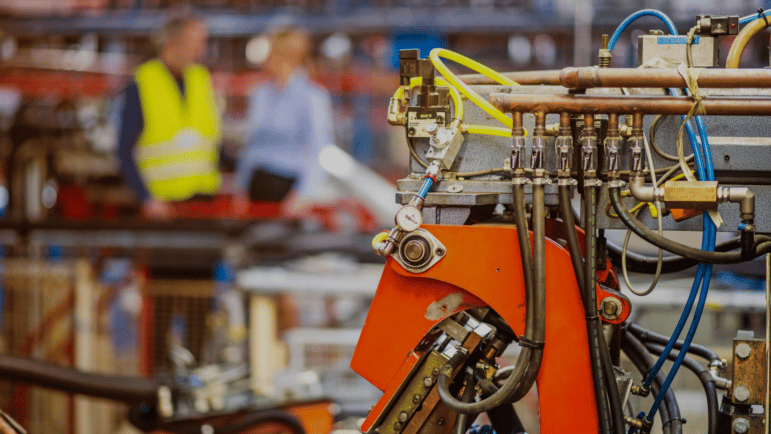As an equipment manufacturer, one of the most critical KPIs you need to watch is Equipment Performance. Equipment Performance is one of the three legs on the Overall Equipment Effectiveness (OEE) stool (the other two KPIs are Equipment Availability and Product Quality).
Read on to discover how equipment manufacturers are improving OEE Equipment Performance by combining machine data with operator insights.
Calculating Your Equipment Performance
Equipment Performance measures how often a manufacturing process is running. This metric factors in all of the things that cause the manufacturing process to run at less-than-optimal speed.
First, some definitions:
- Run Time: The amount of time that the production is scheduled to be running and is running.
- Ideal Cycle Time: Minimum time required to produce one part, in theory.
- Total Count: Total number of parts produced, including defects.
You calculate your Equipment Performance like this:
(Ideal Cycle Time × Total Count) / Run Time = Equipment Performance (expressed as a percentage)
Causes of Poor Equipment Performance
Once you start calculating your Equipment Performance and tracking it over time, you discover that it is rarely 100%. There are three primary causes of this shortcoming.
- Startup loss: Time lost while the process is starting. Unavoidable, but may be longer than necessary.
- Process loss from slow cycles: Reduced speed so that the process takes longer than the Ideal Cycle Time.
- Process loss from small stops: Brief pauses (also called Micro Stops) in production that are not long enough to be tracked as Stop Time
How to Improve Equipment Performance
The key thing to remember about OEE in general and Equipment Performance in particular is that you measure it so that you can manage it. And managing your Equipment Performance means taking steps to improve it. Here are some proven ways to do this.
Collect data
Collect data from every piece of equipment by installing real-time monitoring devices on all equipment used in production. You may find that these IIoT devices are already supplied by the machine’s OEM. If they are not, you will need to source a third-party solution. The key to your success is to monitor every piece of equipment, ideally in real time.
Centralize your data
Gain insights into your data by consolidating all equipment data in one application, and then examining it with dashboards. Effective OEE dashboards help you see at a glance how well your plant is performing. Reports and spreadsheets are out. Dashboards are in.
A tool like OEE CONNECT from MCA Connect, for example, monitors and analyzes your equipment performance so that you better predict facility production and optimize Equipment Performance.
Conduct root cause analysis
Trace the cause of your startup losses, slow cycles, and small stops. Avoid the temptation to apply quick fixes to each problem you discover. Instead, conduct root cause analysis so that you treat the cause (such as jams and misfeeds) and not just the symptoms of your poor Equipment Performance.
Speak with equipment operators
Sometimes the answers you are looking for to improve your Equipment Performance are easily found just by speaking with the workers who operate and maintain your machines. Your operators know why your machines are slow to start up, what causes slow cycles, and what causes small stops.
The way to get these answers out of their heads and into your systems is with a formal, systematic way of gathering, organizing, and displaying their vital feedback. A platform like OEE CONNECT connects your shop floor to your back-office Microsoft Dynamics 365 ERP.
When your operators receive alerts sent to the Operator App, they are asked to confirm and troubleshoot identified problems. This helps you to easily and visually understand the issues that are hindering your Equipment Performance KPI.
Conclusion
The key to improving Equipment Performance is combining machine data with operator insights. Your data tells you when your equipment stops or runs at less-than-optimal speed, and your operators tell you why. If you want to stay on top of your OEE, consider deploying a solution like OEE CONNECT that accelerates your journey to Manufacturing 2.0 by capturing manufacturing data and operator insights at scale.
Author: Jack Moran, Principle Transformation Architect


